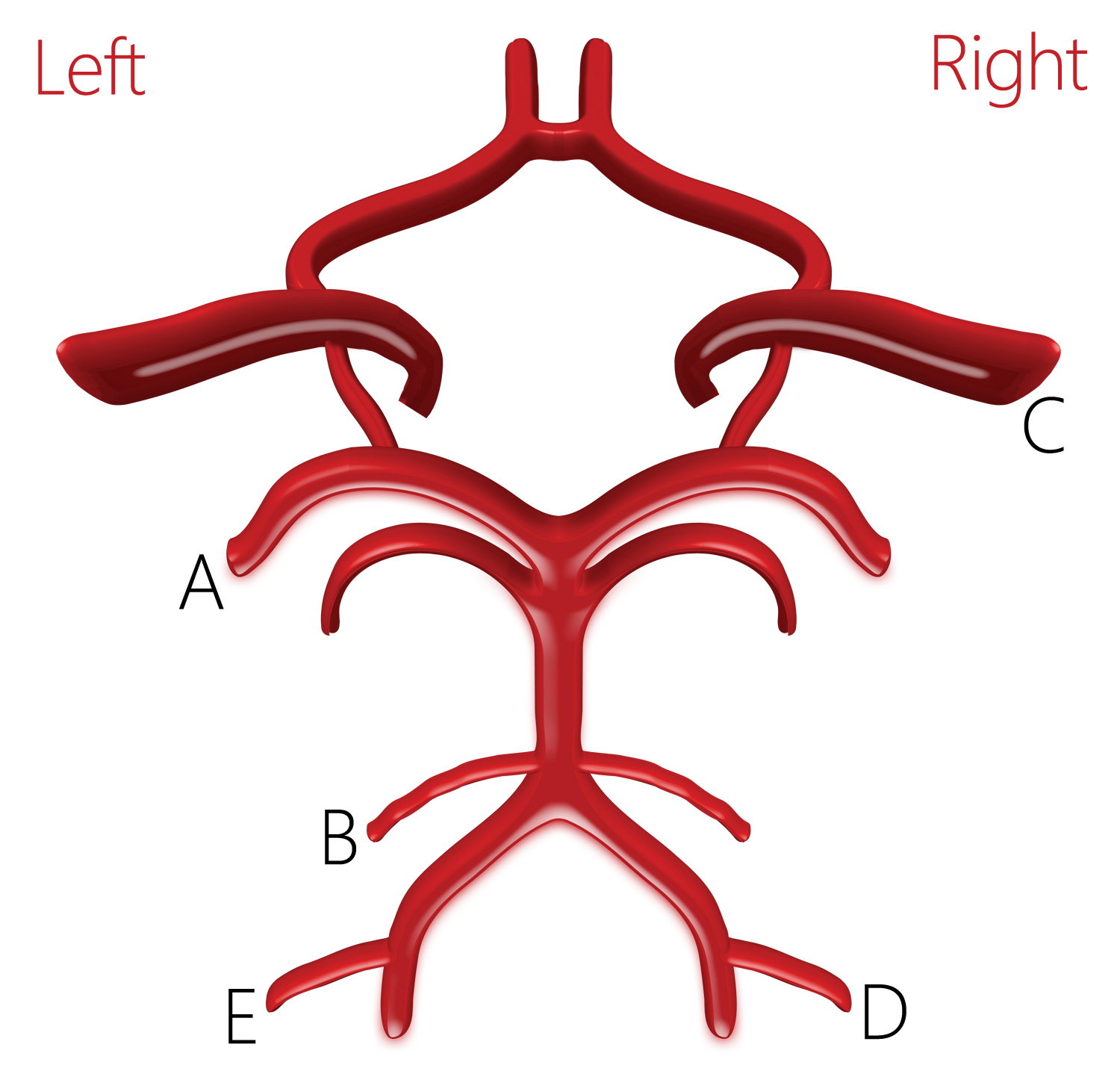WBR0581
| Author | [[PageAuthor::Rim Halaby, M.D. [1]]] |
|---|---|
| Exam Type | ExamType::USMLE Step 1 |
| Main Category | MainCategory::Anatomy, MainCategory::Pathophysiology |
| Sub Category | SubCategory::Neurology |
| Prompt | [[Prompt::A 68 year old man with past history of coronary artery disease presents for acute onset severe vertigo and nausea. The patient explains that he was cooking dinner when all of a sudden he felt the room turn and he fell to the ground. His wife also noticed that his right eye was looking funny and that he sounded unusually hoarse. On exam, you notice drooping of the right eyelid and unequal pupils with right miosis. You also detect loss of pain and temperature sensation from the left torso and arm and the right face. When asked to walk, the patient exhibits ataxic gait, frequently falling toward the right. An MRI shows an area of hyperintensity localized to the brainstem. Which of the following arteries is most likely occluded in this patient? |
| Answer A | AnswerA::A |
| Answer A Explanation | AnswerAExp::This refers to the left posterior cerebral artery (PCA). Occlusion of the PCA leads to an infarct to the occipital cortex specifically the visual cortex. Classically, this presents with homonymous hemianopia with macular sparing. |
| Answer B | AnswerB::B |
| Answer B Explanation | [[AnswerBExp::This refers to the left anterior inferior cerebellar artery (AICA). Occlusion of the AICA can present with features similar to our patient; however, nucleus ambiguus dysfunction (hoarsness, dysphagia, and absent gag reflex) is unusual. Instead AICA lesions present with isult to the facial and cochlear nuclei.]] |
| Answer C | AnswerC::C |
| Answer C Explanation | [[AnswerCExp::This refers to the middle cerebral artery]] |
| Answer D | AnswerD::D |
| Answer D Explanation | AnswerDExp:: |
| Answer E | AnswerE::E |
| Answer E Explanation | AnswerEExp:: |
| Right Answer | RightAnswer:: |
| Explanation | [[Explanation::
This patient displays the classical features of the lateral medullary syndrome (Wallenburg’s Syndrome) due to the occlusion of the posterior inferior cerebellar artery. Typically, brainstem lesions present with crossed deficits with the facial involvement localizing the side of the lesion. Loss of pain and temperature sensation from the left torso and arm indicates right spinothalamic tract involvement, while the association of right facial sensation loss is consistent with injury to the right spinal trigeminal nucleus. His hoarseness is secondary to the involvement of the nucleus ambiguus which is usually specific to PICA lesions. Further investigation would probably show dysphagia and decreased gag reflex which are also indicative of nucleus ambiguus involvement. His initial vertigo and nausea would also suggest a lesion to the vestibular nucleus. In addition, the observed ataxia would indicated a lesion to the inferior cerebellar peduncle also localizing ipsilateral to the lesion. |
| Approved | Approved::No |
| Keyword | |
| Linked Question | Linked:: |
| Order in Linked Questions | LinkedOrder:: |

